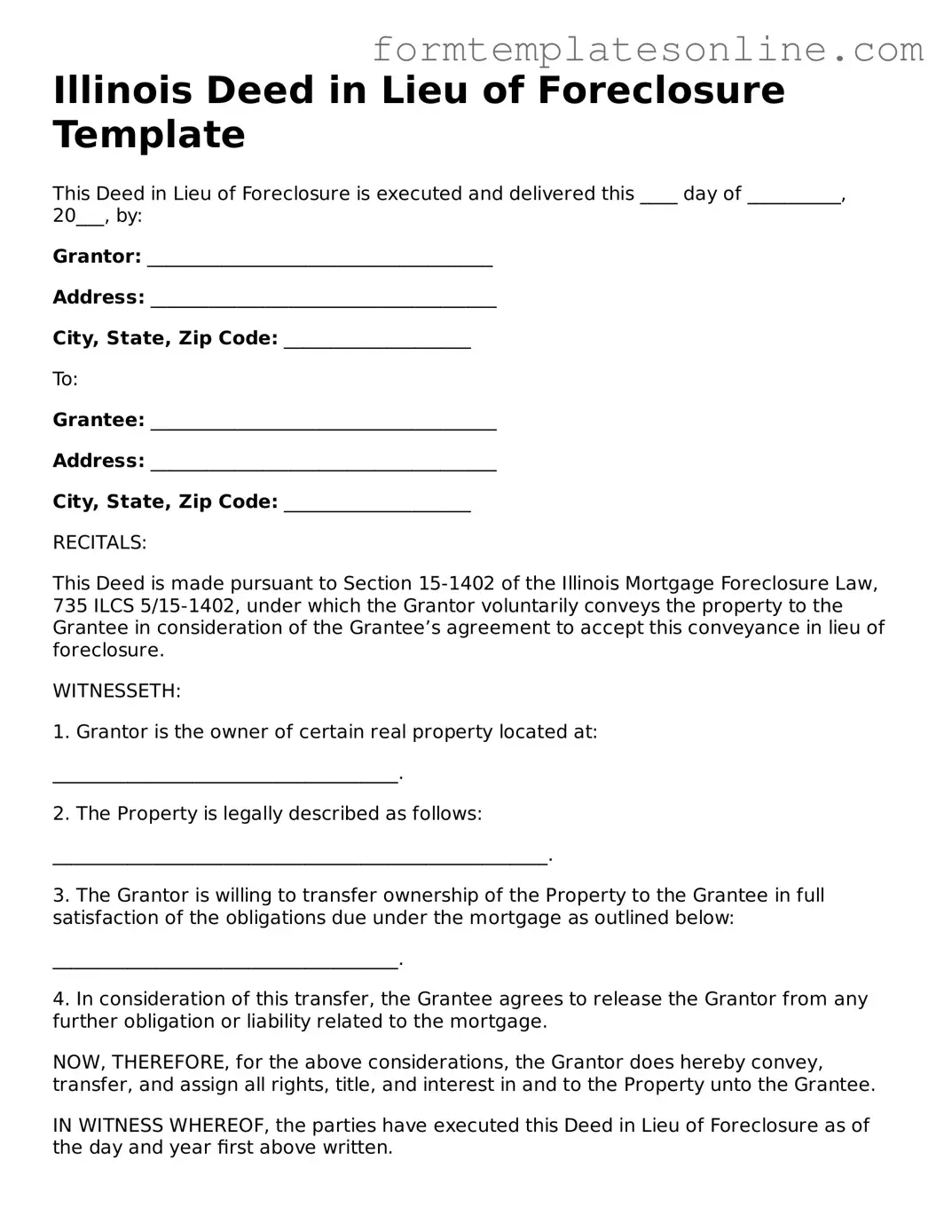Illinois Deed in Lieu of Foreclosure Template
This Deed in Lieu of Foreclosure is executed and delivered this ____ day of __________, 20___, by:
Grantor: _____________________________________
Address: _____________________________________
City, State, Zip Code: ____________________
To:
Grantee: _____________________________________
Address: _____________________________________
City, State, Zip Code: ____________________
RECITALS:
This Deed is made pursuant to Section 15-1402 of the Illinois Mortgage Foreclosure Law, 735 ILCS 5/15-1402, under which the Grantor voluntarily conveys the property to the Grantee in consideration of the Grantee’s agreement to accept this conveyance in lieu of foreclosure.
WITNESSETH:
1. Grantor is the owner of certain real property located at:
_____________________________________.
2. The Property is legally described as follows:
_____________________________________________________.
3. The Grantor is willing to transfer ownership of the Property to the Grantee in full satisfaction of the obligations due under the mortgage as outlined below:
_____________________________________.
4. In consideration of this transfer, the Grantee agrees to release the Grantor from any further obligation or liability related to the mortgage.
NOW, THEREFORE, for the above considerations, the Grantor does hereby convey, transfer, and assign all rights, title, and interest in and to the Property unto the Grantee.
IN WITNESS WHEREOF, the parties have executed this Deed in Lieu of Foreclosure as of the day and year first above written.
Grantor Signature: ________________________________
Date: ________________________________________
Grantee Signature: ________________________________
Date: ________________________________________
STATE OF ILLINOIS
COUNTY OF _____________________
Before me, a notary public, personally appeared _______________ (Grantor) and _______________ (Grantee), who acknowledged that they executed the above instrument for the purposes therein contained.
Given under my hand and seal this ____ day of ___________, 20__.
Notary Public Signature: _________________________
My Commission Expires: _________________________
